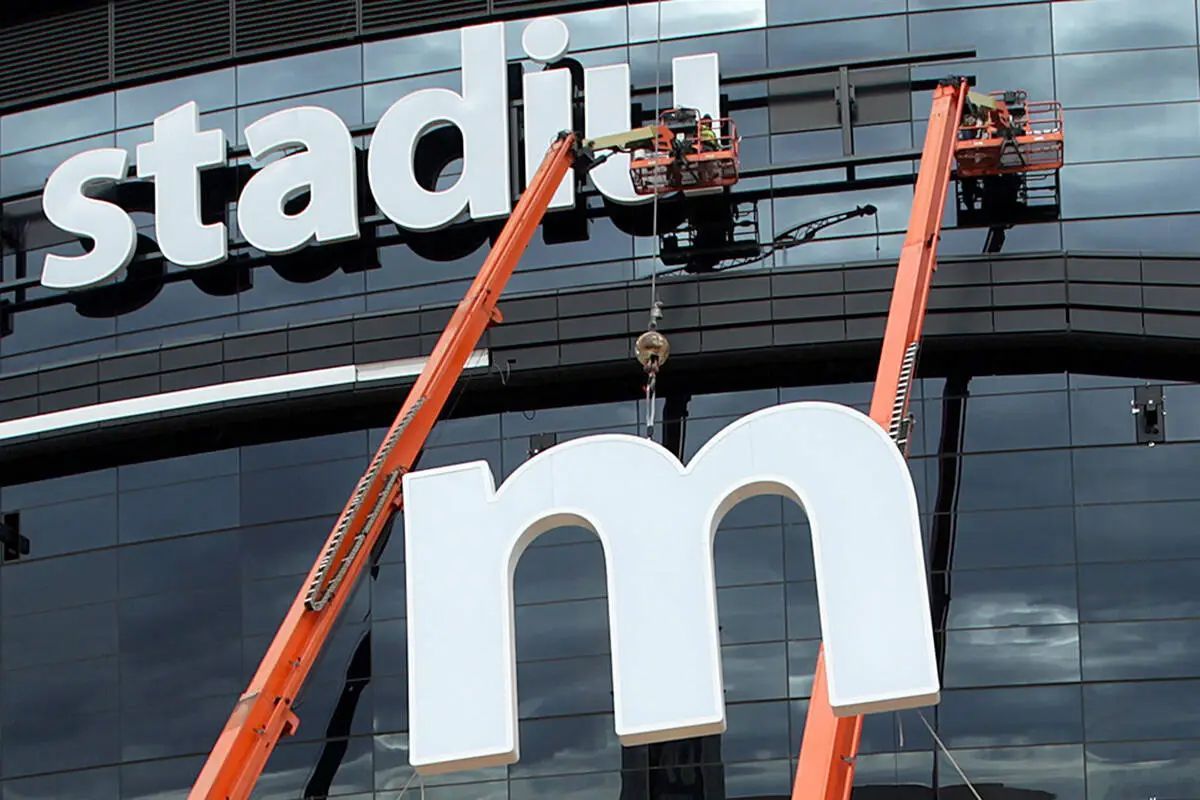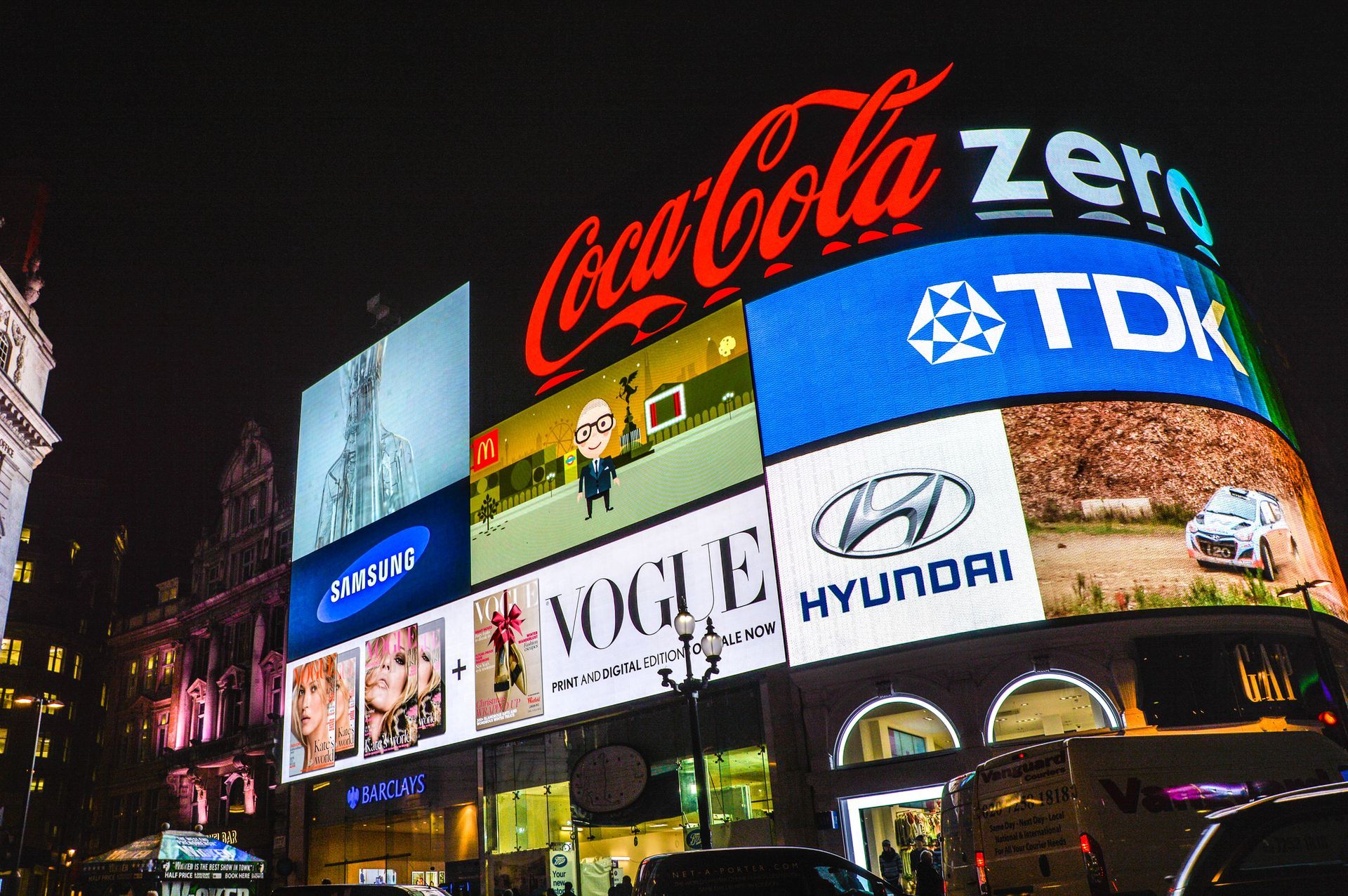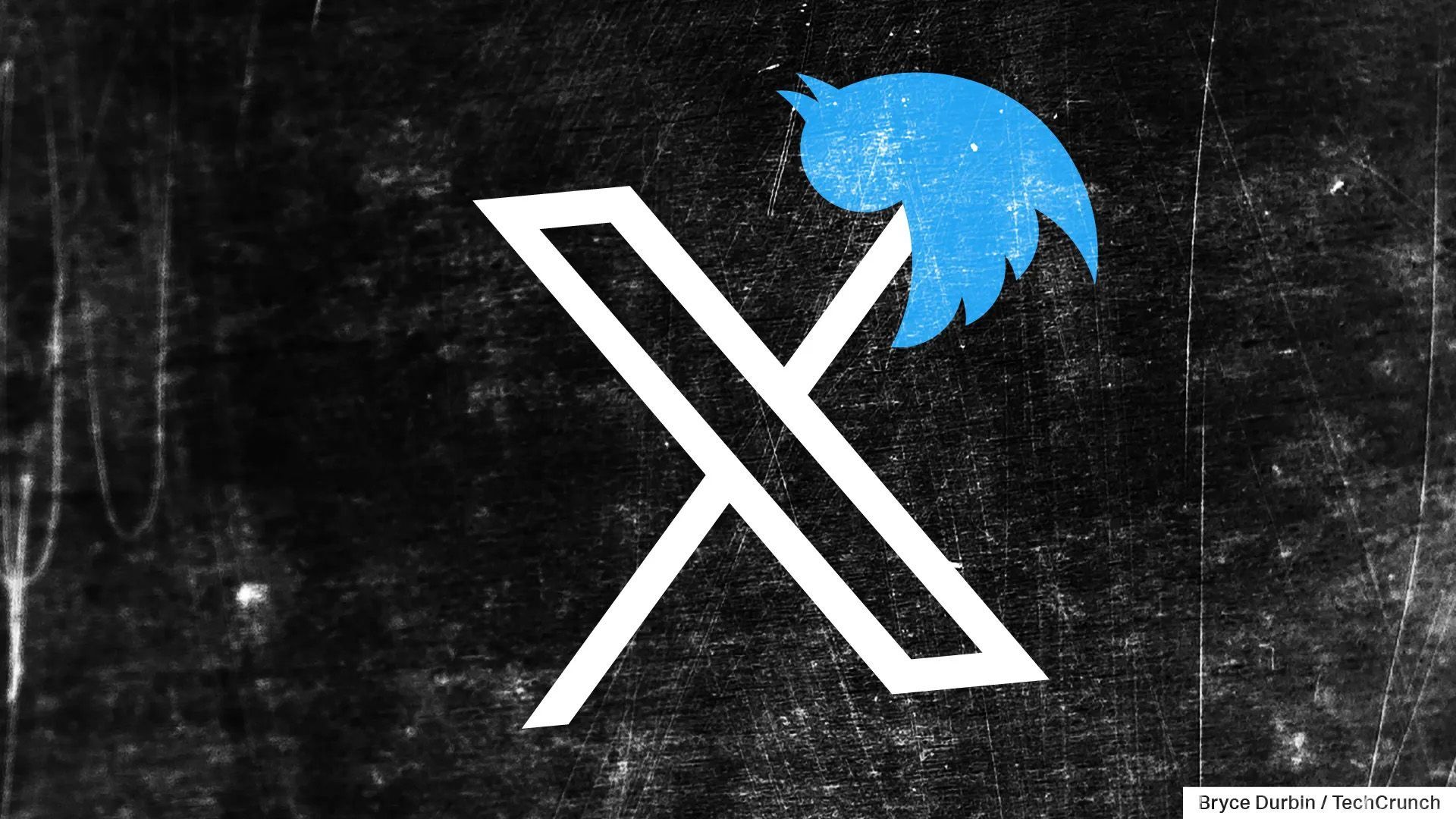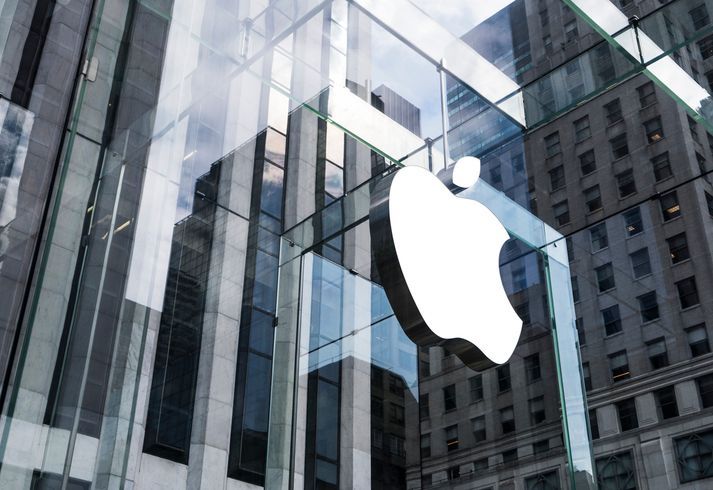HUMANIZE TECH
Give your tech brand a soul.
Welcome to Humanize Tech, the resource hub for technology leaders who grasp the strategic importance of branding.
Any tech brand can perform better if it connects with people on an emotional level. If it communicates meaning, not just features. If it's human. This is the place to find the tools, tips, and resources you need to craft stories that humanize your tech brand. Enjoy.

Why Marketing is Often Too Slow to Support Sales Marketing and sales should operate as a dynamic duo, seamlessly collaborating to drive revenue and deliver a unified customer experience. However, in many B2B organizations, sales teams feel that marketing can't keep up with an ever-evolving market. This misalignment often leads to sales teams taking matters into their own hands—creating their own materials, crafting their own messaging, and improvising to close deals. The consequences? Inconsistent branding, inaccurate information, and a decidedly disjointed customer experience. Common Bottlenecks That Slow Marketing Down: Traditional Content Creation Workflows: Marketing teams often follow a rigid content approval process involving multiple stakeholders and revisions, causing delays. Marketing fears Bob Loblaw, sales mocks him. Siloed Data & Insights: Marketing doesn’t always have access to real-time sales insights, making it hard to create relevant materials quickly. Resource Constraints: Many marketing teams are stretched thin, juggling branding, demand generation, and internal communications while trying to support sales. Digital Asset Management (DAM) Inefficiencies: Sales reps struggle to find the latest materials buried somewhere in a clunky, archaic DAM solution that IT defends with relentless ferocity, ahem... Sharepoint. Lack of Prioritization for Sales Needs: Marketing teams often focus on long-term brand-building efforts, while sales teams need quick, tactical resources to close deals now. The result? Sales teams create their own decks, one-pagers, and outreach messages—often off-brand and filled with inaccurate or outdated information, leading to a fragmented prospect experience and eroding brand value. How AI-Powered Automation and Real-Time Insights Solve These Bottlenecks AI agents are reshaping the marketing-sales relationship by automating workflows, providing real-time insights, and eliminating the friction that slows down content creation. 1. AI-Driven Content Generation & Personalization AI-powered tools like Jasper, Writer, and Copy.ai can generate first drafts of sales enablement materials—pitch decks, product one-pagers, and competitor battle cards—significantly reducing turnaround times. Generative AI can customize content for different buyer personas, industries, and deal stages, ensuring sales teams have tailored, on-brand materials instantly. 2. AI-Powered Sales Insights AI tools like Gong and Chorus analyze sales calls and customer interactions to identify recurring objections, competitor mentions, and deal-blocking challenges. This data can be fed directly into marketi ng teams in real-time, allowing them to create the most relevant sales assets before reps even ask for them. 3. Intelligent Digital Asset Management (DAM) AI-powered DAM systems (e.g., Bynder, MediaValet) make it easier for sales teams to quickly find the right materials by using smart search, tagging, and recommendations. Instead of sifting through outdated files, AI s urfaces the most relevant, up-to-date content bas ed on deal stage, industry, or customer type. 4. AI-Powered Workflow Automation AI can automate marketing request workflows, prioritizing sales needs and reducing delays. Automated approval processes speed up content reviews, ensuring materials are quickly approved and deployed. Real-World Example: How Reachdesk & Gong Used AI to Align Sales & Marketing Reachdesk, a global direct mail and gifting platform, faced challenges aligning their sales and marketing teams, especially during a period of rapid international growth. To solve this, they implemented Gong’s AI-powered revenue intelligence platform , which provided real-time insights into both sales rep and customer behaviors. This allowed their global teams to stay aligned and work more efficiently. By integrating AI, Reachdesk achieved: Enhanced Team Alignment: AI provided insights that kept both sales and marketing on the same page, ensuring a unified approach to customer engagement. More Efficient Sales Processes: AI-driven analysis helped prioritize leads and optimize sales methodologies. Better Content & Messaging Consistency: Marketing could create materials that were immediately relevant to the challenges identified by sales. As a result, Reachdesk improved sales efficiency, marketing alignment, and overall customer experience , demonstrating how AI can bridge the gap between these traditionally siloed teams. AI is Powerful, But Leadership is Essential While AI plays a transformative role in bridging the sales-marketing gap, it is ultimately a tool , not a replacement for strategic leadership. The most successful implementations come from visionary leaders who understand how to integrate AI into their existing workflows and align it with their business goals. AI provides insights, automates processes, and accelerates execution, but t he human element remains critical. Marketing and sales leaders must set the vision, interpret AI-driven insights with strategic intent, and ensure that AI enhances—not replac es—customer relationships. A t Speak! Agency, we work with businesses to bring AI-powered efficiencies into their marketing and sales strategies, ensuring that these tools support the bigger picture —one driven by people, vision, and expertise. The Future: AI as the Gas For Marketing & Sales AI isn’t replacing marketing or sales—it’s making both teams more effective. By integrating AI-driven automation, insights, and asset management, companies can eliminate friction and ensure that sales reps have the tools they need before they even ask for them. With AI, marketing teams can work at the speed of sales, ensuring alignment, efficiency, and most importantly—a seamless customer experience. Next Up in This Series: Real-Time Content Creation: How AI Enables Speed & Relevance – Exploring how AI can generate high-quality sales enablement materials in record time. If your company has struggled with slow marketing response times, let us know— how are you solving it today?

Brand transformation is more than linguistic gymnastics — it's a multidimensional shift that requires both visual and verbal integration to be fully understood and executed. As branding professionals, we often find ourselves at the intersection of words and imagery, negotiating the complex relationship between what is said and what is seen. Beyond Words: The Dual Nature of Brand Understanding When we consider how brands evolve and transform, we must acknowledge that positioning and messaging alone cannot capture the full essence of a rebrand. That's because a brand also lives in the visual impact of its logo, the emotional response to its color palette, the tactile experience of its products, and the psychological associations formed through consistent imagery. These elements create meaning in ways that transcend verbal explanation. This integrated nature of brand understanding presents both challenges and opportunities for brand strategists and agencies. Those who rely solely on brand messaging frameworks often miss the deeper, more intuitive connections that visual elements forge with audiences. Conversely, those who neglect verbal precision may create beautiful but meaningless brand experiences. The Strategist's Dilemma This reality creates a fascinating paradox for brand strategists. On one hand, it's a blessing — those who master the integration of visual and verbal thinking possess a competitive advantage that purely analytical thinkers cannot match. They can navigate the subtleties of brand transformation with a more complete toolkit, sensing shifts in cultural meaning that might be invisible to others. On the other hand, it presents a curse — how do we communicate about something that partially exists beyond the realm of words? How do we justify decisions that are partly intuitive? How do we demonstrate value when some of the most important aspects of our work resist straightforward measurement or explanation? Embracing Integrated Thinking The most successful brand transformations occur when strategists embrace both modes of thinking: Understanding the rational and emotional components of brand perception Recognizing when to prioritize visual impact over verbal explanation (and vice versa) Developing frameworks that respect both analytical rigor and creative intuition Communicating in ways that engage both logical and visual processing Moving Forward As the branding landscape continues to evolve, the integration of visual and verbal thinking becomes not just advantageous but essential. The brands that resonate most deeply with audiences are those that achieve coherence across all dimensions of experience. By acknowledging the limitations of purely linguistic approaches and embracing the full spectrum of how meaning is created, brand strategists can navigate transformation more effectively—even if they sometimes struggle to put into words exactly why something works. The Speak! Approach: Integration in Action At Speak!, we've built our entire agency model around the principle that visual identity and messaging strategy must be conceived and developed in concert — never in isolation. This integrated approach isn't just a philosophical stance; it's the foundation of our process and the key to our success in transforming brands. Rather than having verbal and visual specialists only intersect when work is handed off, we are cross-disciplinary teams where messaging strategists and visual designers work side by side from day one. Our brand strategy function (that's me) leads stakeholder interviews and workshops but our art director is always on the call and not just as a passive listener. Engaged. Asking hard questions. Poking holes. This ensures that every strategic decision considers both dimensions simultaneously. The benefits of our integrated approach are evident in the results we deliver: Greater Coherence : When messaging and visuals grow from the same strategic foundation, they naturally reinforce each other, creating a brand experience that feels seamless and purposeful. Deeper Resonance : Brands that speak to both the rational mind (through clear messaging) and the intuitive mind (through visual impact) create more powerful and lasting impressions with audiences. Faster Alignment : Our clients spend less time reconciling conflicting approaches from different specialists and more time refining a unified strategic direction. Unexpected Solutions : The creative tension between verbal and visual thinking often leads to breakthrough ideas that neither approach would have discovered independently. Our clients often tell us that this integrated process not only delivers superior results but also provides them with a new lens through which to understand their own brands. By experiencing the power of visual-verbal synergy in action, they gain insights that transform not just their brand assets but their entire approach to brand management.

For tech startups, creating a Minimum Viable Product (MVP) — the stripped-down version of your product that allows you to test core assumptions with real users — is a common approach to product development. But what about your brand? Enter the Minimum Viable Brand (MVB): the essential elements needed to present your company professionally and connect with early customers, without over-investing in elaborate brand development.

Let's cut to the chase: In a world drowning in digital noise and AI-generated content, brand authenticity isn't just a nice-to-have — it's your survival kit. Today's tech-savvy customers can smell manufactured messaging from ten browser tabs away, and they're not afraid to hit "unfollow" faster than you can say "corporate values." The Power of Brand Truth Here's the deal: brand authenticity means getting real about who you are as an organization. We're not talking about your product specs or your tech stack — we're talking about the raw, honest truth of why you exist and what drives your team to show up every day. Your brand truth might be buried in your startup story, your unique approach to solving gnarly problems, or the way you're fundamentally changing how your customers work and live. Take Microsoft's transformation under Satya Nadella. When he took the reins in 2014, he didn't just pivot the company's technology — he unleashed its authentic truth as an enabler of human achievement. This wasn't some slick marketing play; it was a fundamental shift from "Windows first" to "empower every person and organization on the planet to achieve more." The result? Microsoft's stock price soared over 600% since 2014, and they've become one of the most valuable companies in the world. Why Truth Matters More Than Ever The numbers don't lie: According to Stackla, 88% of consumers say authenticity is crucial when deciding which brands to support. Even more telling? A recent Edelman study found that 81% of consumers need to trust a brand before they'll even consider buying from them. In an age where every startup claims to be "disrupting" something, customers are developing highly sophisticated BS detectors. They're not just looking at your product dashboard — they're scrutinizing your GitHub contributions, reading your engineering blog posts, and watching how you handle service outages on Twitter. Uncovering Your Brand's Truth Finding your brand's authentic truth requires serious introspection. Ask yourself: What technical problem made you angry enough to start this company? What conventional wisdom in your industry are you willing to challenge? What keeps showing up in your customer success stories? What principles would you defend even if they slowed down your growth? Sometimes your truth is hiding in plain sight. Look at Twilio. Their brand truth isn't about APIs — it's about democratizing complex communications technology. This core truth drives everything from their developer-first approach to their acquisition strategy. Expressing Truth Through Story Once you've nailed your brand truth, you need to tell its story in a way that clicks with your audience. And no, we're not talking about another "Our Journey" blog post. Consider how Stripe tells its story. Their truth isn't about payment processing — it's about increasing the GDP of the internet. This bigger narrative has turned what could have been dry technical documentation into a compelling story about empowering entrepreneurs worldwide. Their transparency about their engineering challenges and public infrastructure investments has built unprecedented trust in the developer community. Building Trust Through Consistency Real talk: authenticity means walking the walk. When Zoom faced security criticisms in 2020, CEO Eric Yuan didn't hide behind PR speak. He admitted the problems, implemented a 90-day feature freeze to focus on security, and hosted weekly webinars to address concerns. This transparent approach turned a potential crisis into a trust-building opportunity. The data backs this up: According to PwC, 71% of consumers say they'll lose trust in a brand if they perceive it's putting profit over people. And once that trust is gone, 46% say they'll stop buying from the company altogether. The Bottom Line In the tech world, where every other company claims to be "revolutionary" or "game-changing," authentic brand truth is your secret weapon. It's not about crafting the perfect message—it's about having the courage to be genuinely, consistently, unapologetically you. The next generation of successful tech brands won't win because they had the most sophisticated tech stack or the biggest AWS budget. They'll win because they dared to be real in an increasingly artificial world. In an industry obsessed with automation and scalability, never forget that authenticity is the one thing you can't fake. Remember: Your brand truth is like your source code — you don't write it from scratch, you refactor and optimize what's already there. When you commit to pushing authentic commits to your brand repository, you're not just building a better story — you're compiling a more resilient business that resonates with users on a fundamental level.

Is your brand portfolio sending mixed signals? Customers don't have patience for that. A streamlined brand presence isn't just nice to have — it's essential for growth. At Speak!, we've mastered the art of strategic brand architecture , helping tech companies transform complex product arrays into compelling, crystal-clear portfolios that customers actually understand. The Hidden Cost of Portfolio Complexity Think about the last time you visited a tech company's website and felt overwhelmed by their product offerings. That's exactly what we help our clients avoid. A cluttered portfolio doesn't just confuse customers — it actively works against your success by: Creating decision paralysis among potential buyers who can't quickly understand your value proposition Stretching your marketing budget thin across too many product lines Diluting your brand's impact in an already crowded market Building a Powerful Brand Architecture Our approach to brand architecture isn't just about simplification—it's about strategic alignment. Here's how we transform tech portfolios: Deep-Dive Brand Audit — We start by mapping your entire portfolio, identifying overlap, gaps, and opportunities that others might miss. This comprehensive analysis reveals where simplification can have the biggest impact. Strategic Framework Design — Working closely with your team, we develop a brand architecture that supports your business objectives. Each product finds its perfect place in your brand story, creating a narrative that resonates with your target audience. Intuitive Brand Hierarchy — We establish clear relationships between your products and services, making it effortless for customers to navigate your offerings and find exactly what they need. Cohesive Visual Language — Our design team creates a unified visual system that makes your brand instantly recognizable across all touchpoints, from your website to your product packaging. The Impact of Portfolio Simplification When tech companies streamline their portfolios, the results are transformative: Customer journeys become smoother, leading to higher conversion rates and stronger loyalty Your market position becomes clearer, attracting better-qualified leads and strategic partnerships Growth becomes more manageable—adding new products or services feels natural, not forced Transform Your Tech Brand Ready to turn your complex portfolio into a powerful brand asset? Let's talk about how strategic brand architecture can simplify your offerings while amplifying your market impact. Get in touch today to start building a more focused, effective brand portfolio.

As the United States prepares for a wave of mergers and acquisitions (M&A) in 2025, driven by anticipated regulatory relaxations under the incoming Trump administration, businesses must focus on more than just deal-making. While the financial and operational aspects of an M&A transaction often take center stage, the importance of strategic rebranding should not be underestimated. With studies showing that 70% to 90% of mergers and acquisitions fail to achieve their intended goals, often due to cultural mismatches and poor integration planning, a thoughtfully planned and executed rebrand can streamline costs, preserve brand equity, and set the stage for post-merger success. The Role of Rebranding in M&A Rebranding during a merger or acquisition isn’t just about updating logos or creating new marketing materials; it’s about unifying two entities under a cohesive identity. This process is crucial for: Building Internal Alignment: Employees from both organizations must rally behind a shared mission, vision, and values. Reassuring Stakeholders: Customers, investors, and partners need to understand the benefits of the merger or acquisition. Preserving Brand Equity: Proper rebranding ensures that the strengths of both brands are retained while creating something greater than the sum of its parts. Reducing Confusion: A clear and consistent rebrand mitigates market confusion, safeguarding the trust and loyalty of the audience. Planning for Success: The Cost-Saving Benefits of Early Rebrand Preparation One of the biggest challenges in an M&A rebrand is cost management. Without proper planning, the rebrand can spiral into an expensive, disjointed effort. However, engaging experts like our partner BrandActive, a leader in planning and implementing rebrands for major corporations, can significantly reduce costs and ensure a smooth transition. Key components to keeping rebranding costs in check include: Comprehensive Brand Audits: Identifying all branded assets and touchpoints to avoid overlooked elements that could lead to rework or missed deadlines. Phased Implementation Plans: Balancing speed with quality by prioritizing high-impact changes and rolling out others over time. Vendor Optimization: Leveraging economies of scale and reducing duplication of efforts by consolidating supplier relationships. Crafting a Compelling Narrative: The Story Behind M&A Success Every merger or acquisition has a story, and telling it effectively can determine the success of the rebrand. The narrative should: Highlight the Strategic Rationale: Explain why the merger or acquisition occurred and how it benefits stakeholders. Emphasize Shared Values and Vision: Showcase the compatibility between the two organizations and their united goals. Address Audience Concerns: Reassure customers, employees, and partners about continuity, improvements, and opportunities. Inspire Excitement: Generate enthusiasm by presenting the merger as a step forward for innovation, service, and impact. 10 Key Steps to Selecting an M&A Branding Agency Choosing the right branding agency is critical to a successful M&A rebrand. Here are ten steps to keep in mind: Understand Your Needs: Clearly define the scope of your rebrand, including objectives, timeline, and budget. Consider using a rebranding checklist to guide your process. Assess Experience: Look for agencies with a proven track record of handling complex M&A rebrands. Evaluate Strategic Capabilities: Ensure the agency can provide more than just creative services by offering strategic planning, asset audits, and phased rollout expertise. Review Portfolio and Case Studies. Examine previous projects to gauge the agency’s ability to deliver cohesive, impactful rebrands. Check References: Speak to past clients to understand their experience working with the agency. Prioritize Communication: Choose an agency with a collaborative approach and a clear communication process. Ensure Cultural Fit: Select a partner whose values align with your organization’s culture and goals. Request a Detailed Proposal: Ask for a roadmap outlining the agency’s approach, timeline, deliverables, and costs. Consider Integration Expertise: The agency should be adept at integrating branding efforts across various channels and platforms. Think Long-Term: Choose a partner who will support your brand’s evolution beyond the initial rebrand. To ensure a positive and meaningful merger or acquisition companies must plan beyond the balance sheet. Strategic rebranding is an opportunity to redefine and elevate the combined entity’s identity, ensuring a seamless transition and long-term success. By planning early, crafting a compelling story, and partnering with implementation experts, organizations can unlock the full potential of their M&A efforts while mitigating costs and preserving stakeholder trust.

Jaguar’s recent rebrand has stirred up quite a debate among branding experts, car enthusiasts, and anyone paying attention to the automotive industry. It’s not every day that a legacy brand with nearly a century of heritage makes such a dramatic pivot. And dramatic is the right word for what Jaguar has done: the brand has chosen to shift entirely toward an electric future, leaving behind not only its combustion engines but also its loyal (and dwindling) audience. On the surface, this move is bold, visionary, and forward-looking. But the execution of the rebrand, in my view, misses a critical mark.

When two companies merge, one of the thorniest challenges is determining the best approach for rebranding the combined entity. The decision on whether to maintain separate brands, combine them, or go with an entirely new brand can have far-reaching implications for customer perception, internal culture, and long-term business success. As a brand strategy expert who has advised numerous tech companies navigating post-merger or post-acquisition rebranding , I've seen firsthand the importance of carefully evaluating the options and making the right choice for your unique situation. In this article, I'll outline the key rebranding approaches available and the factors to weigh when deciding the best path forward. Rebranding Strategies for Merged Tech Companies 1. Combined Brand When the merger involves companies of relatively equal size and stature, a combined brand approach is often the preferred option. This involves taking the strongest elements of each legacy brand and fusing them into a new, unified identity. A great example of this is the 2022 merger between Salesforce and Slack. The two companies, both giants in the enterprise software and collaboration space, came together to form a powerhouse in the business technology market. Rather than Salesforce simply acquiring and absorbing Slack, the companies opted for a combined brand strategy, unveiling the new "Slack from Salesforce" identity. This approach allowed Salesforce to leverage Slack's beloved brand recognition and user-friendly reputation, while Slack benefited from Salesforce's established enterprise reach and resources. The new combined brand projected a forward-thinking, innovative image that appealed to both companies' customer bases. The benefits of a combined brand strategy include: - Leveraging the strengths of both legacy brands - Avoiding the perception of one company "winning" over the other - Establishing a fresh, future-facing identity for the new organization However, executing a successful combined brand can be challenging, requiring careful navigation of cultural differences and stakeholder buy-in. 2. Co-Branding In some cases, retaining both legacy brand names can be advantageous, at least in the short-to-medium term. This co-branding approach allows the merged company to capitalize on the existing brand equity and customer familiarity of each entity. A prime example is the 2016 merger of Dell and EMC. The new company, Dell Technologies, maintained the well-known Dell brand for its PC and consumer divisions, while EMC continued to market its enterprise storage and data management solutions. This allowed Dell Technologies to appeal to a broad range of customers while preserving the distinct brand identities. Co-branding can be beneficial when: - The legacy brands have strong, differentiated positions in the market - Retaining both names reduces customer and stakeholder disruption - The merged company plans to maintain distinct product lines or business units The drawback is that co-branding can be more complex and costly to implement and manage long-term. 3. One Brand Subsuming the Othe r In cases where one merger partner clearly dominates the other in size, market share, or brand recognition, it may make sense for the stronger brand to subsume the weaker one entirely. This approach simplifies the rebranding process and allows the dominant brand to fully leverage its existing equity. An illustration of this is the 2014 acquisition of Beats Electronics by Apple. Rather than maintaining the Beats brand, Apple fully integrated the company and its products under the Apple name and visual identity. This allowed Apple to seamlessly fold Beats' technology and customer base into its own ecosystem. Subsuming a weaker brand can work well when: - There is a stark disparity in brand power and awareness between the merger partners - The dominant brand is a better fit for the combined company's target customers and positioning - Maintaining separate brands would create more confusion than clarity However, this approach does risk alienating customers loyal to the subsumed brand and can be challenging for the absorbed company's employees to accept. Evaluating the Right Rebranding Approach When determining the optimal rebranding strategy for your merged tech company, there are several key factors to consider: 1. Relative Brand Strength and Equity: Assess how the brand power, reputation, and customer loyalty of the merging companies compare. This will help determine whether a combined, co-branded, or dominant brand approach is most appropriate. 2. Market Position and Product Fit: Evaluate how well the legacy brands' market positions and product/service offerings align or complement each other. This can inform whether combining, separating, or transitioning the brands makes the most strategic sense. 3. Cultural Compatibility: Assess the cultural fit between the merging organizations. A combined brand may be more viable if the corporate cultures are closely aligned, while separate brands could be preferable if there are significant differences. 4. Customer Expectations and Preferences: Understand how your customers currently perceive the legacy brands and what they would expect or prefer in a post-merger identity. Avoid choices that would significantly disrupt or alienate your install base. 5. Long-Term Growth Potential: Consider which rebranding approach best positions the combined entity for future success, market expansion, and continued customer relevance. Ultimately, there is no one-size-fits-all solution — the optimal rebranding strategy will be unique to your specific merger circumstances. By carefully weighing these key factors, you can determine the best path forward to create a powerful, cohesive brand identity that resonates with customers and drives lasting business value.

Generative AI has revolutionized content creation by automating processes that once took designers and creatives hours or even days. While this technology can be a game-changer, especially for brands, it introduces potential risks regarding brand consistency, compliance, and legal exposure. To harness the power of AI-generated visuals while protecting a brand’s integrity, establishing and adhering to AI brand guidelines is critical.

Artificial intelligence has become an indispensable tool for many corporate branding teams aiming to streamline processes and scale impact. From creating more relevant customer experiences to simplifying asset management, AI’s role in branding is only growing. However, while it offers compelling efficiency benefits, there are still areas where human expertise is irreplaceable. In this article, we’ll look at five ways AI can improve efficiency for corporate branding teams — and four areas where caution is warranted. Five Ways AI Can Drive Efficiency in Branding 1. Audience Insights and Market Research AI-driven tools like natural language processing (NLP) and sentiment analysis allow branding teams to collect and interpret massive amounts of social media data, customer feedback, and online conversations. This capability enables a nuanced understanding of audience preferences and behaviors at unprecedented speed and scale, empowering brand teams to adjust their strategies based on real-time insights. At Speak!, we’re even experimenting with tools that allow us to “interview” AI-generated personas, asking questions that may help guide brand positioning and messaging decisions. 2. Streamlining Content Creation and Curation AI tools like ChatGPT and other language models can help produce blog articles, social media copy, and even video scripts. These tools assist branding teams by drafting content quickly, helping marketers overcome writer's block, and enabling faster turnaround times for campaigns. While AI might not replace a seasoned writer, it’s an efficient co-pilot for getting through the initial stages of content creation. Just make certain humans oversee the content and creative development process to ensure the brand's voice, tone and visual identity are properly reflected. 3. Enhanced Personalization and Targeting AI-powered platforms can dynamically adjust ad and content delivery based on audience segmentation, behaviors, and real-time interactions. By analyzing a user’s journey, AI helps brands provide more tailored experiences that resonate with individuals on a personal level. This personalized approach improves engagement rates and ensures marketing efforts aren’t wasted on generic or misaligned messaging. 4. Asset Management and Organization With the sheer volume of content and assets a branding team manages, keeping everything organized can be challenging. AI can automate metadata tagging, image recognition, and file categorization, making it easier to search, retrieve, and repurpose assets. This helps brand teams find the right content faster, reducing time spent searching through databases and cloud storage. 5. Predictive Analytics for Campaign Success AI tools can analyze past campaigns and provide predictive insights on potential outcomes for future initiatives. Branding teams can use these insights to identify what messages, visuals, and formats are likely to succeed, optimizing their resources by focusing on high-impact approaches. Predictive analytics also enables A/B testing with smaller sample sizes, reducing the guesswork in campaign planning. Three Areas Where AI Shouldn’t Replace Human Expertise 1. Core Brand Strategy and Vision Development The essence of a brand is rooted in purpose, authenticity, and values — all aspects that require a human touch. AI can provide data to support strategic decisions, but defining a brand’s identity and purpose should remain a deeply human endeavor. When brand teams rely too heavily on AI for strategic guidance, they risk diluting the brand’s emotional impact and missing opportunities to connect with audiences on a deeper level. 2. Complex, Creative Ideation AI tools are excellent for optimizing creative elements but less effective at generating the kind of breakthrough ideas that come from human intuition and cultural understanding. Creative ideation for major campaigns, brand refreshes, or new product launches demands insight, risk-taking, and emotional intelligence that AI currently cannot replicate. Relying on AI too heavily in this area may result in “safe” but uninspired campaigns. In other words, the kind of concepts destined to be ignored in the market. 3. Crisis Management and Authentic Communication In times of crisis, consumers expect brands to respond with empathy, transparency, and sincerity. Automated responses or AI-generated statements often lack the nuance required to handle sensitive situations effectively. Corporate branding teams should prioritize human involvement to craft messages that are thoughtful and authentic, showing genuine empathy and respect for their audience’s concerns. Up for Debate Photo and Image Generation AI tools like Midjourney and Adobe Firefly are revolutionizing the ability to create realistic photos on the fly. However, the process of doing so comes with risk. Generative AI platforms are trained on huge archives of images and text. It’s unclear who owns the images that AI platforms create for you. One of our clients has hit the pause button on GenAI image creation by employees, contractors, and agencies due to concerns about licensing and legal ramifications but also about the authenticity of AI-generated images (authenticity happens to be one of their ore brand pillars). Other corporate brand teams don't permit images that feature people or product representations to be created with AI. Striking the Right Balance The growing presence of AI in branding offers remarkable opportunities to increase efficiency, but the human element remains essential. AI can handle repetitive tasks, analyze data at scale, and speed up content creation, but some of branding’s most important responsibilities — such as crafting a brand’s identity, creating breakthrough ideas, and communicating during crises — are best left in human hands. By combining AI’s analytical capabilities with human insight and creativity, corporate branding teams can create a more efficient and impactful branding ecosystem. Using AI smartly means identifying where it adds value and where human expertise is irreplaceable. Brands that strike this balance will be better positioned to evolve in a rapidly changing landscape while retaining their unique voice and purpose.

The world is politicized and polarized. For brand leaders, it's vitally important to understand what your brand stands for. Brand values have evolved from being a simple set of guiding principles to becoming a critical touchstone for companies. The stakes are high — how a brand communicates its values can either build loyalty or alienate its audience. In this climate, crafting and authentically living by brand values is not only important for internal alignment but also for maintaining credibility and trust in the eyes of consumers. Why Brand Values Matter At their core, brand values define what a company stands for. They influence decisions, shape culture, and guide interactions with customers, employees, and stakeholders. But in a world where social and political issues dominate public discourse, brand values have taken on an additional role. Brands are now expected to engage in these conversations, whether they want to or not. According to an article from the Forbes Business Council , companies today walk a tightrope when it comes to brand messaging in a polarized world. The article highlights that consumers are increasingly looking for brands that are aligned with their personal values. In fact, 82% of consumers say they prefer to buy from companies that stand for a cause that resonates with them. However, as the Forbes article points out, missteps or inauthentic attempts at value-driven messaging can quickly backfire, leading to a loss of trust or even public backlash . Authenticity is Key Authenticity is the linchpin of successful brand values. It’s not enough to have a set of statements written on your website or splashed across marketing materials. Consumers are savvy and can easily discern whether a brand truly embodies its values or if it’s simply engaging in "values-washing." The Forbes article discusses how brands need to “walk the tightrope” of being true to their values while navigating divisive topics. One way to ensure authenticity is by embedding these values into every aspect of the business — from employee behavior and corporate policies to product development and customer service. When brand values are fully integrated, they become a natural extension of the company’s actions, making it easier for consumers to trust the brand. The Role of Consistency Consistency is another critical factor. If a brand claims to value sustainability, for instance, but engages in environmentally harmful practices, it risks alienating its audience. A recent example of a company successfully aligning its values with actions is Patagonia, which has consistently communicated its commitment to environmental causes and has taken concrete steps to support that commitment. Their values are not just words — they are reflected in everything from their supply chain to their corporate giving programs. In contrast, brands that flip-flop or shy away from taking a stand often lose credibility. Consumers, especially younger generations like Millennials and Gen Z, have come to expect consistency between what a brand says and what it does. This expectation extends beyond the products they buy—it influences where they work, the communities they engage in, and the brands they advocate for. Navigating the Challenges of Polarization The increasing polarization of society presents brands with unique challenges. Brands must be strategic in their messaging, knowing that any statement they make could be perceived as taking a side. This can be especially risky for companies trying to appeal to a broad audience. However, silence is often interpreted as complicity, making it difficult for brands to remain neutral on issues that matter to their customers. The Forbes article mentions that “neutrality is often a choice” that can backfire. By taking a stand, brands can foster deeper connections with their audience, even if it means alienating some customers. The key is to be thoughtful and intentional. Brands must weigh the risks and rewards of speaking out, but those that do so authentically and consistently are more likely to retain loyal customers who align with their values. The Long-Term Payoff Ultimately, brands that commit to authentic, lived values will fare better in the long run. These brands will not only attract customers who share their values but also build a sense of purpose and loyalty that transcends individual transactions. In a world where trust is increasingly fragile, and consumer choice is plentiful, having a strong, authentic set of brand values can be the differentiator that sets a company apart. In conclusion, brand values have never been more important, especially in our current polarized climate. But for these values to have an impact, they must be genuine, consistently applied, and aligned with the company’s actions. By staying true to its core principles, a brand can foster trust, build a loyal customer base, and create lasting connections in an ever-changing world. Need help identifying and crafting brand values that set the tone for your brand, give us a shout . --- Walking the Tightrope: Brand Messaging in a Polarized World* (Forbes Business Council, 2024).

A brand refresh can be an essential strategy for technology companies aiming to stay competitive and relevant, as demonstrated by PayPal’s recent visual identity update . This move underscores a key principle that we embrace at our agency: differentiating through color while remaining aware of market dynamics and customer expectations.

The world of B2B marketing is constantly evolving, and with it comes trends, fads, and hot-button issues. Some spark innovation, while others make you wonder. As B2B tech marketers, it's our job to sift through the noise and identify the ones that matter—those that truly align with creating real human connections between brands and their audiences. Let’s take a closer look at three current B2B marketing trends that make you go, "Hmmmm." 1. AI-Generated Content: The Future or a Formulaic Trap? The buzz around AI in marketing is impossible to ignore. From generating blog posts to writing personalized emails, AI-driven content creation tools promise to save time and scale efforts. But there’s a flip side to this growing trend. While AI can certainly churn out content faster than a human, it often lacks the emotional nuance that resonates with a real audience. B2B buyers are more informed and selective than ever, expecting content that doesn’t just inform but connects on a deeper, more human level. Can AI really deliver on that? Sure, it can streamline processes, but relying too heavily on AI risks turning content into a sterile, soulless product that lacks authenticity. The key is balance—using AI to enhance efficiency without sacrificing the human touch that builds trust. Hmmmm: AI is a powerful tool but can over-using it have negative consequences? Our gut tells us that pumping out AI content, particularly in high-leverage channels, can take over your brand’s voice or your ability to tell a compelling story that connects emotionally. 2. The Over-Segmentation of Audiences: Personalized or Paralyzing? Everyone knows that personalization is critical in modern marketing. But how far is too far? In the quest for hyper-personalization, some B2B brands are creating such narrowly defined audience segments that they risk missing the bigger picture. Every customer wants to feel understood, but the reality is that over-segmentation can lead to confusion, inefficient messaging, and even contradictory brand experiences. Think about it—when you slice your audience into too many micro-segments, you run the risk of diluting your message. Instead of creating a cohesive brand identity, you may be delivering fragmented experiences that don’t align across channels. As a result, your brand’s voice and core message can get lost in translation. Hmmmm: Personalization is crucial, but does over-segmentation and a dozen buyer personas cause brands to lose touch with the broader narrative? We think, yes. A well-crafted message that speaks to shared human emotions can often be more powerful than over-complicated segmentation strategies. 3. The Metrics Obsession: Data-Driven or Data-Dependent? In B2B marketing, the mantra is often "if you can’t measure it, you can’t manage it." Data has become the backbone of marketing strategies, helping teams measure performance, understand customer behavior, and optimize campaigns. But there’s a growing danger in the over-reliance on metrics. In our quest for data-driven insights, are we losing the art of intuition and creativity? While it’s critical to track KPIs like conversion rates and ROI, the magic of human connection doesn’t always translate into tidy data points. Sometimes, a campaign’s success is intangible—the emotional resonance it creates with an audience or the long-term brand affinity it builds. Focusing too much on short-term metrics can cause brands to neglect the bigger picture. Hmmmm: Can metrics overshadow the human aspect of your marketing? We love data but believe in balancing the analytical with the creative to create experiences that engage both hearts and minds. Strive for a Human-Centric Approach As B2B marketing evolves, it’s clear that technology and data will continue to play significant roles. But in our quest for innovation, we can’t forget the importance of human connection. Whether it’s resisting the urge to over-automate, avoiding over-segmentation, or focusing too heavily on metrics, the goal should always be to keep the human element at the forefront.

Design, as a visual and functional language, offers abundant approaches to convey messages, evoke emotions, and create memorable experiences. Two prominent design philosophies that often stand at opposing ends of the spectrum are minimalism and maximalism. Both styles have their distinct merits and drawbacks, and understanding the nuances of each can be pivotal in humanizing brands and crafting compelling brand narratives. Minimalism: The Art of Less is More Minimalism is characterized by simplicity, clean lines, and a restrained color palette. This approach strips away the superfluous to focus on the essential elements, ensuring clarity and functionality. Pros of Minimalism Clarity and Focus: Minimalist designs are often more straightforward, making it easier for users to understand the core message without distraction. This is especially beneficial for brands aiming to communicate a clear and direct value proposition. Timeless Appeal: Minimalist designs tend to age well, avoiding trends that may quickly become outdated. This longevity is advantageous for brands looking to establish a lasting identity. Enhanced Usability: With fewer elements competing for attention, minimalist designs can improve user experience by making interfaces more intuitive and navigation more straightforward. Sophistication and Elegance: The refined aesthetics of minimalism can evoke a sense of sophistication and luxury, appealing to audiences who appreciate understated elegance. Cons of Minimalism Perceived Blandness : The simplicity of minimalism can sometimes be mistaken for blandness, especially if not executed with a keen eye for detail and creativity. Limited Expression: Minimalism’s constraint on elements can limit the designer’s ability to convey complex or multifaceted brand stories, potentially resulting in a less emotionally engaging experience. Risk of Homogeneity: When many brands adopt minimalist aesthetics, there’s a risk of designs becoming homogeneous, making it harder for individual brands to stand out. Maximalism: The Celebration of Excess Maximalism, on the other hand, embraces complexity and richness. It’s characterized by bold colors, intricate patterns, and a plethora of visual elements. This approach revels in diversity and abundance, creating vibrant and dynamic designs. Pros of Maximalism Expressive and Engaging: Maximalist designs are often more visually stimulating and can convey a more dynamic and engaging brand story. This is particularly useful for brands wanting to evoke strong emotional responses. Distinctiveness: The bold and eclectic nature of maximalism makes it easier for brands to carve out a unique visual identity that stands out in a crowded market. Versatility: Maximalism allows for a wide range of visual experimentation, accommodating diverse ideas and cultural influences. This versatility can make the brand appear more inclusive and globally minded. Rich Storytelling: The abundance of elements in maximalist designs can be used to convey complex narratives and cultural richness, making it ideal for brands with a deep heritage or a multifaceted story. Cons of Maximalism Risk of Overwhelm: The very complexity that defines maximalism can also overwhelm users, making it harder to navigate and digest the information presented. Higher Maintenance: Maximalist designs can require more frequent updates and adjustments to stay relevant and engaging, increasing the long-term maintenance efforts. Potential Clutter: Without careful curation, maximalist designs can quickly descend into clutter, detracting from the overall user experience and potentially diluting the brand message. Visual Variation and Brand Drift: Complex visual systems have a steeper learning curve and risk misapplication by marketing constituents and partners. Humanizing Brands Through Design When it comes to humanizing brands, both minimalism and maximalism offer unique pathways. The key is understanding the brand’s core values, target audience, and the emotions you wish to evoke. Minimalism for Humanizing Brands Minimalism can humanize a brand by emphasizing authenticity and transparency. The simplicity and clarity inherent in minimalist designs can foster a sense of trust and approachability. Brands that want to appear sincere, focused, and committed to quality over quantity can benefit from a minimalist approach. For instance, a tech company emphasizing user-friendly interfaces and seamless experiences might use minimalism to highlight these qualities. Maximalism for Humanizing Brands Maximalism, with its rich storytelling capabilities, can humanize brands by showcasing their personality and cultural depth. This approach is perfect for brands that have vibrant histories, diverse product lines, or a strong cultural connection. By leveraging bold visuals and intricate details, maximalism can make a brand feel more relatable and lively. A brand in the entertainment industry, for example, might use maximalism to convey its dynamic and multifaceted nature, engaging audiences with a visually rich narrative. Finding the Balance Ultimately, the choice between minimalism and maximalism should be guided by the brand’s identity and the audience’s preferences. In some cases, a hybrid approach can offer the best of both worlds, combining the clarity of minimalism with the expressive power of maximalism. By thoughtfully integrating elements of both styles, brands can create designs that are both visually appealing and deeply human, resonating with audiences on multiple levels. In conclusion, both minimalism and maximalism have their distinct advantages and drawbacks. The key lies in understanding the brand’s story, the audience’s expectations, and the context in which the design will be experienced. By carefully considering these factors, brands can choose the approach that best humanizes their narrative and creates a lasting impact.

In high-tech markets, consumer preferences and market trends evolve rapidly. As a result, companies must remain vigilant about their brand’s relevance and resonance. One way to maintain or enhance brand appeal is through strategic brand modifications. However, the terms "rebrand" and "brand refresh" are often used interchangeably, leading to confusion. Understanding the distinction between these two concepts is crucial for making informed decisions that align with your business goals. What is a Rebrand? A rebrand is a comprehensive transformation of a company's identity. This process involves altering foundational elements such as the company name, logo, visual design, brand messaging, and sometimes even the core values and mission statement. Rebranding is typically undertaken for profound reasons, such as: Market Shifts: When market dynamics change significantly, a rebrand may be necessary to stay competitive. For instance, a company that started in one industry but has pivoted to another may need a rebrand to reflect its new direction. Mergers and Acquisitions: When companies merge or one acquires another, a rebrand can help create a unified identity that represents the new entity. Negative Public Perception: If a brand has suffered from a tarnished reputation, a rebrand can help distance it from past issues and project a fresh image. Global Expansion: Entering new markets with different cultural nuances may require a brand to rebrand to ensure cultural relevance and avoid misunderstandings. Examples of Rebranding One notable example is Google, which rebranded its corporate structure to Alphabet Inc. in 2015. This rebrand was a strategic move to separate its core search engine business from its other ventures and to signal its expansion into various industries, such as biotechnology and autonomous vehicles. Another example is IBM’s transformation from a hardware-centric company to a leader in cloud computing and AI. In the 1990s, IBM shifted its focus from hardware to software and services, rebranding itself as a technology consulting company to better align with market trends and customer needs. What is a Brand Refresh? A brand refresh, on the other hand, is a subtler update to an existing brand. It involves refining and modernizing elements of the brand to keep it current and appealing, without overhauling its core identity. Brand refreshes are undertaken for reasons such as: Staying Current: As design trends evolve, a brand refresh ensures that the company’s visual and messaging elements remain contemporary. Enhanced Relevance: Minor tweaks in brand positioning or messaging can help maintain relevance with the target audience. Expanded Offerings: When a company expands its product or service lines, a refresh can help incorporate these new elements into the existing brand framework. Examples of Brand Refreshes Microsoft’s refresh of its Windows logo in 2012 is a prime example. The update modernized the logo’s design, transitioning from the colorful, wavy flag to a more minimalist and flat design, aligning with the then-new Metro design language introduced with Windows 8. Another example is Intel’s brand refresh in 2020. While retaining its iconic blue color, Intel introduced a new logo and visual identity to reflect its evolution and innovations in areas like AI, 5G, and edge computing, ensuring the brand remained relevant in the rapidly changing tech landscape. Key Differences Between a Rebrand and a Brand Refresh Understanding the distinction between a rebrand and a brand refresh involves recognizing the scope, purpose, and impact of each process. Scope Rebrand: A rebrand is comprehensive, encompassing all aspects of the brand, from visual identity to core messaging and sometimes even the company’s name. It’s a top-to-bottom overhaul aimed at repositioning the company entirely. Brand Refresh: A brand refresh is more focused and limited in scope. It typically involves updating specific elements like the logo, color palette, typography, or tagline, while keeping the overall brand essence intact. Purpose Rebrand: The purpose of a rebrand is to signify a fundamental shift in the company’s direction, market positioning, or identity. It’s often a response to significant internal or external changes. Brand Refresh: The purpose of a brand refresh is to keep the brand vibrant and relevant. It’s about making necessary adjustments to stay in tune with evolving trends and consumer preferences. Impact Rebrand: The impact of a rebrand is profound, affecting all stakeholders, from employees to customers and investors. It requires extensive communication and often involves re-educating the market about the new brand identity. Brand Refresh: The impact of a brand refresh is more subtle but still significant. It helps reinforce the brand’s relevance and appeal without causing confusion among existing customers. When to Choose a Rebrand vs. a Brand Refresh Deciding between a rebrand and a brand refresh depends on the specific circumstances and objectives of your business. Choose a Rebrand If: Your brand no longer reflects your company’s values, vision, or market position. You’re undergoing significant changes such as mergers, acquisitions, or entering new markets. You need to distance your brand from negative perceptions or past controversies. Choose a Brand Refresh If: Your brand needs a visual or messaging update to stay current and appealing. You’re expanding your product or service offerings and need to reflect these changes. You want to enhance your brand’s relevance without overhauling its core identity. Both rebranding and brand refreshes are powerful tools for maintaining and enhancing your brand’s appeal. While a rebrand involves a complete transformation to signal significant changes, a brand refresh focuses on modernizing and fine-tuning the existing brand. By understanding the differences and carefully considering your business objectives, you can choose the right approach to ensure your brand remains strong, relevant, and resonant.

Rebranding, when executed strategically, can be a powerful tool for businesses to rise above negative press and emerge stronger than ever. But negative publicity isn't the only trigger for a rebrand. We faced a similar challenge at our company. Our website content, packed with features and specs, lacked the "why." It failed to connect with our audience and suffered in search results. This made us revamp our content strategy to focus on the problems we solve and the value we deliver. We created content that resonated with the audiences, and our search ranking saw a significant boost. Continue reading on Forbes.com

In B2B technology arenas like SaaS, IT services, and IT infrastructure, standing out in a crowded marketplace is both a challenge and a necessity. Brand directors and CMOs are tasked with the critical role of ensuring their company's unique value proposition is clear, compelling, and consistent. Yet, even the most seasoned professionals can sometimes miss the signs that their brand positioning is off-kilter. Here are five key indicators that your B2B tech brand may have a positioning problem. 1. Your Go-To Slide Deck is 40+ Slides One of the clearest signs of a positioning problem is an overstuffed slide deck. If your standard presentation to prospects or stakeholders is more than 40 slides, it’s a red flag. An overly lengthy deck often means you’re trying to compensate for a lack of clarity and focus. Instead of delivering a succinct and compelling narrative, you’re bombarding your audience with information in the hope that something will stick. A well-positioned brand can convey its core message and value proposition in just a few slides. It should be easy to communicate what your company does, how it’s different, and why it matters. If you find yourself needing slide after slide to explain your business, it’s time to revisit and refine your positioning. 2. You Sound Like All Your Competitors In the B2B tech space, differentiation is key. If your messaging sounds eerily similar to that of your competitors, your brand is likely suffering from a positioning problem. When your value proposition, key messages, and even your taglines echo the industry norm, it becomes challenging for prospects to see why they should choose you over another provider. Conduct a competitive analysis to see how your messaging stacks up against others in your industry. If you find that your language, tone, and claims blend in with the crowd, it’s a clear indication that your positioning needs a refresh. Aim to highlight your unique strengths and the distinct benefits you offer to stand out in a sea of sameness. 3. Even Your Employees Can't Describe What You Do or Why It’s Important Your employees are your brand ambassadors, and if they struggle to articulate what your company does and why it matters, you have a positioning problem. When employees can’t easily describe your company’s mission, products, and unique value, it points to a lack of internal alignment and clarity. Hold internal workshops or training sessions to ensure that everyone in your organization understands and can communicate your brand’s positioning. A strong, clear, and well-communicated positioning strategy not only helps in external marketing efforts but also boosts internal morale and alignment. 4. Your Sales Cycle is Incredibly Long While B2B tech sales cycles are inherently longer due to the complexity of products and decision-making processes, an excessively long sales cycle can indicate a positioning issue. If prospects are taking too long to move through the sales funnel, it may be because they don’t fully understand the value you provide or how you differ from competitors. Clear and compelling positioning helps prospects quickly grasp your value proposition — even before they engage with Sales — leading to faster decision-making. Review your sales and marketing materials to ensure they are succinct, compelling, and aligned with your brand’s unique strengths. Simplifying and clarifying your message can help reduce the length of your sales cycle. 5. Your Market Share is Stagnant or Declining If your market share has plateaued or is declining, despite consistent marketing and sales efforts, it’s a strong indicator that your brand positioning may be off. Stagnant or declining market share suggests that your target audience isn’t resonating with your current positioning, or worse, they’re being swayed by competitors with clearer, more compelling messages. Conduct market research to gather insights on how your brand is perceived versus your competitors. Use this data to refine your positioning strategy, ensuring it aligns with market needs and differentiates you from the competition. A well-positioned brand should be able to capture and grow market share by clearly communicating its unique value proposition. Outside Perspective is a Game Changer Identifying and addressing a positioning problem is crucial for the success of your B2B tech brand. Gaining the outside perspective of a brand agency can help identify opportunities internal stakeholders may be too close to see. Speak! has helped a long list of tech leaders discover their brand essence and carve out a compelling position. Let our leadership team provide an initial analysis of your positioning and visual identity strategy . Tell us a little bit about your brand and we'll weigh via a video recording with our assessment and provide some actionable tips and priorities.

Brand architecture plays a pivotal role in shaping how businesses perceive, relate to, and interact with a company's portfolio of products and services. Simply put, brand architecture is the organizational structure of a company’s brands, products, and services. It defines the relationships between different brands within the organization and helps to create clarity, synergy, and differentiation in the marketplace. Understanding and implementing the right brand architecture strategy is crucial for B2B technology companies to effectively manage their brand equity, optimize marketing efforts, and achieve business goals. It can be especially important following a merger or acquisition as a new entity establishes a relationship between multiple solutions in a growing portfolio. The Importance of Brand Architecture 1. Clarity and Consistency Brand architecture provides a clear structure that helps stakeholders understand the company's offerings and their relationships. For B2B technology companies, this clarity is essential in communicating complex solutions to diverse audiences. Consistent branding ensures that customers can easily recognize and differentiate between products, reducing confusion and fostering trust. 2. Efficiency in Marketing and Operations A well-defined brand architecture streamlines marketing efforts by allowing for cohesive and unified campaigns. It enables companies to leverage brand equity across different products, reducing redundancy and maximizing marketing budgets. Operationally, it aids in resource allocation, product development, and market expansion strategies. 3. Strategic Flexibility As B2B technology companies grow through innovation, mergers, or acquisitions, brand architecture provides a framework to integrate new products or brands without diluting the overall brand identity. This flexibility ensures that the brand can evolve and adapt to market changes while maintaining a strong core identity. 4. Enhanced Customer Experience Clear brand architecture enhances the customer journey by providing a coherent and intuitive understanding of the company's offerings. It helps in guiding customers through the decision-making process, ensuring they can easily find and relate to the products that best meet their needs. Types of Brand Architecture Strategies Different brand architecture strategies suit different organizational goals and market contexts. Here are the primary types of brand architecture strategies, along with examples relevant to B2B technology companies: 1. Branded House In a Branded House strategy, the company operates under a single master brand, with sub-brands or products closely linked to the master brand. This approach emphasizes a unified brand identity, leveraging the strength and equity of the master brand across all offerings. Example: IBM IBM uses a Branded House strategy where all its products and services, such as IBM Watson, IBM Cloud, and IBM Security, are marketed under the IBM brand. This creates a strong, cohesive identity that reinforces IBM’s reputation as a leader in technology and innovation. 2. House of Brands In a House of Brands strategy, the company owns multiple brands, each with its own distinct identity and market presence. This approach allows for greater flexibility and differentiation, catering to diverse market segments without tying them to the master brand. Example: Alphabet Inc. Alphabet, the parent company of Google, employs a House of Brands strategy. It operates multiple companies such as Google, Waymo, and Verily, each with its own brand identity. This allows Alphabet to diversify its portfolio and enter different markets while minimizing risk to the master brand. 3. Endorsed Brands Endorsed Brands leverage the reputation and credibility of the master brand while maintaining their own unique identity. The master brand endorses the sub-brands, providing them with a level of assurance and recognition. Example: Intel Intel’s branding strategy involves endorsing its products with the master brand. For instance, Intel Core, Intel Xeon, and Intel Optane are all endorsed by the Intel brand. This endorsement signifies quality and innovation, reinforcing customer trust and confidence. 4. Hybrid Brand Architecture A Hybrid Brand Architecture combines elements of Branded House, House of Brands, and Endorsed Brands. This strategy allows for flexibility in managing a diverse portfolio while leveraging the strengths of different branding approaches. Example: Microsoft Microsoft employs a Hybrid Brand Architecture. While products like Microsoft Office and Microsoft Azure use the Microsoft name, others like LinkedIn and GitHub retain their own distinct brands. This hybrid approach allows Microsoft to capitalize on its strong master brand while maintaining the unique value propositions of its acquired brands. Implementing Effective Brand Architecture Implementing the right brand architecture strategy requires a thorough understanding of the company’s goals, market dynamics, and customer needs. Here are some steps to ensure effective brand architecture: 1. Conduct a Brand Audit Evaluate the current brand portfolio to understand strengths, weaknesses, overlaps, and gaps. Assess brand equity, market positioning, and customer perceptions to inform strategic decisions. 2. Define Strategic Goals Align the brand architecture strategy with the company’s long-term business objectives. Whether it’s market expansion, product diversification, or brand consolidation, the strategy should support these goals. 3. Map the Brand Hierarchy Create a visual representation of the brand architecture, detailing the relationships between the master brand, sub-brands, and endorsed brands. This map serves as a blueprint for brand management and communication. 4. Develop Brand Guidelines Establish clear guidelines for brand usage, including naming conventions, visual identity, and messaging . These guidelines ensure consistency across all touchpoints and reinforce the desired brand perception. 5. Monitor and Adapt Continuously monitor the performance and perception of the brand portfolio. Be prepared to adapt the brand architecture strategy in response to market changes, customer feedback, and business developments. Brand architecture is a critical component of brand strategy for B2B technology companies. It provides clarity, efficiency, flexibility, and enhanced customer experience, driving overall business success. By carefully selecting and implementing the appropriate brand architecture strategy, companies can optimize their brand equity, streamline marketing efforts, and achieve sustainable growth in a competitive market. Whether adopting a Branded House, House of Brands, Endorsed Brands, or Hybrid approach, the key is to align the strategy with business goals and customer needs, ensuring a cohesive and impactful brand presence. Need help figuring out your brand architecture strategy? Contact Speak! today for a 15-minute conversation about how we can determine an approach that makes sense for you and your customers.

From FinTech and MarTech to EdTech and InsurTech, the B2B SaaS (Software as a Service), is flooded with vendors seeking to stand apart. A well-crafted brand strategy had never been more crucial. Strong positioning and messaging, combined with a unique visual identity, not only differentiates a company from its competitors but also builds trust, credibility, and emotional connections with its target audience. Here, we delve into the best practices for B2B SaaS companies to build and maintain a compelling brand. 1. Understand Your Target Audience The foundation of any successful brand strategy is a deep understanding of the target audience. B2B SaaS companies must identify the real humans who are making the decisions and segment their audience based on industry, company size, pain points, and buying behavior. This segmentation allows for more personalized and relevant messaging. Example: HubSpot , a leading marketing, sales, and customer service SaaS platform, has a diverse audience ranging from small businesses to large enterprises. HubSpot tailors its messaging to address the specific needs of each segment, providing targeted solutions and resources. 2. Craft a Clear and Compelling Value Proposition A value proposition succinctly communicates the unique benefits and value that your SaaS product offers. It should address the pain points of your target audience and highlight what sets your product apart from competitors. Example: Slack’s value proposition is "Slack is where work happens." This simple yet powerful statement encapsulates Slack’s core benefit of streamlining team communication and collaboration, making it indispensable for modern workplaces. 3. Develop a Consistent Brand Identity Consistency is key in branding. Your brand identity should be cohesive across all touchpoints, including your website, social media, email marketing, and customer support. This includes visual elements (logo, color scheme, typography) and messaging (tone, voice, key messages). Example: Salesforce , a pioneer in the SaaS industry, maintains a consistent brand identity with its distinctive cloud logo, blue color palette, and approachable, friendly tone of voice. This consistency helps reinforce brand recognition and trust. 4. Humanize Your Brand In the B2B space, it’s easy to focus solely on the technical aspects of your product. However, humanizing your brand can create stronger emotional connections with your audience. Showcase the people behind your company, share customer success stories, and engage in authentic conversations. Example: LogRhythm , known for its cybersecurity platform, underwent a rebrand with the guidance of Speak!. The resulting brand story and visual identity amplifies the confidence the heroes working behind the scenes gain from working with a trusted platform. Focusing on the human impact of the solution created an authentic connection with stressed cyber teams on the front line. 5. Leverage Content Marketing Content marketing is a powerful tool for establishing thought leadership and building trust in the B2B SaaS space. Create valuable, educational content that addresses the challenges and needs of your target audience. This can include blog posts, whitepapers, case studies, webinars, and more. Example: Moz , an SEO software company, has built a strong brand through its extensive content marketing efforts. Their blog, “Moz Blog,” is a go-to resource for SEO professionals, offering insights, tips, and industry updates that demonstrate Moz’s expertise and thought leadership. 6. Utilize Social Proof Social proof, such as testimonials, case studies, and user reviews, can significantly enhance your brand’s credibility. Potential customers are more likely to trust the experiences of their peers than marketing messages from the company itself. Example: Zendesk , a customer service software provider, prominently features customer stories and testimonials on its website. These real-world examples of how companies have benefited from Zendesk’s solutions help build trust and encourage new prospects to take action. 7. Invest in a Memorable Logo and Visual Identity Your logo and visual identity are the face of your brand. They should be memorable, distinctive, and reflective of your company’s values and personality. A well-designed logo can leave a lasting impression and enhance brand recall. Example: Intercom , a customer messaging platform, has a simple yet memorable logo featuring a smiley face. This logo, combined with a clean and modern visual identity, effectively conveys Intercom’s friendly and approachable brand personality. 8. Focus on Customer Experience Exceptional customer experience is a cornerstone of a strong brand. Ensure that every interaction with your customers, from onboarding to support, reflects your brand values and commitment to their success. Happy customers are more likely to become brand advocates. Example: Zoom , the video conferencing software, places a strong emphasis on customer experience. Their user-friendly interface, reliable performance, and responsive customer support have contributed to their reputation as a trusted and beloved brand. 9. Engage on Social Media Social media is not just for B2C companies. B2B SaaS companies can use social media platforms to engage with their audience, share valuable content, and showcase their brand personality. It’s also an excellent channel for customer support and feedback. Example: Adobe Creative Cloud actively engages with its audience on social media platforms like Twitter, LinkedIn, and Instagram. They share tutorials, customer stories, and industry insights, reinforcing their brand as a leader in creative software solutions. 10. Monitor and Adapt Your Brand Strategy Branding is not a one-time effort; it requires continuous monitoring and adaptation. Keep an eye on industry trends, customer feedback, and competitor activities. Be willing to evolve your brand strategy to stay relevant and meet the changing needs of your audience. Example: Atlassian , known for its collaboration and project management software, regularly updates its brand strategy to reflect the evolving needs of its customers. Their recent rebranding efforts included a refreshed visual identity and refined messaging to better align with their mission and values. Bonus Tip: Outside Perspective is Beneficial Following these best practices and learning from successful examples, can help your B2B SaaS companies create a compelling brand that resonates with your target audience. However, tapping the expertise of a specialist brand agency that knows how to ask the right questions and pull the right threads can accelerate your success. Take two minutes to answer a few questions and get a head start on your brand initiative. Speak! will perform an initial brand diagnostic and provide a video synopsis of recommended priorities, opportunities, and candid feedback.

Rebranding is a powerful strategy for businesses aiming to rejuvenate their market presence or adapt amidst periods of change (acquisitions, new products, new competition, etc.). However, it's a delicate process that requires a deep understanding of brand equity and a clear strategy to assess the impacts before and after rebranding. In this blog, we will explore the influence of rebranding on brand equity, customer perception and loyalty, and the crucial role of market research in measuring the success of a rebranding effort.

Startups rebrand for a variety of reasons, one of the most common being a fundamental change to their business model or target market. As they grow and evolve, their initial branding may no longer align with their current direction. In these cases, rebranding becomes a strategic necessity to ensure the company's identity resonates with its updated goals and target audience. Rebranding a company can be an opportunity for a fresh start. The original brand may appear outdated, and no longer reflective of the company’s vision and values. Continue reading on Forbes.com

Brand messaging is a central component of every B2B technology brand’s strategy. It's the basis for how effectively you can articulate who you are, why your company exists and why your customers should care. The right messaging and positioning in the right place for your customers is the perfect equation for grabbing their attention. Messaging for B2B technology brands can be difficult to nail. Many tech firms lack the internal resources and time to dive deep into their messaging. Others are forced to focus all their resources entirely on product attributes and improving technology. The list can go on and on. Refining your B2B brands story is no small feat either. We know, because we've helped over 25 tech brands update and refine their brand stories over the last 7 years. We understand that your head is jumbled with everything you want to say, but you freeze when the need to put pen to paper arises. That's why we wrote, "How to Win on Messaging: A Guide for B2B Technology Companies."
















